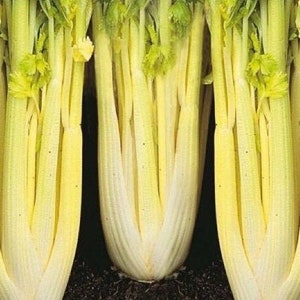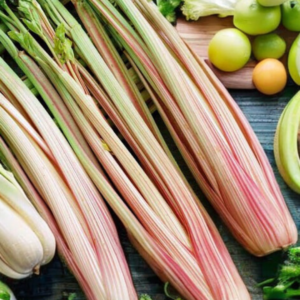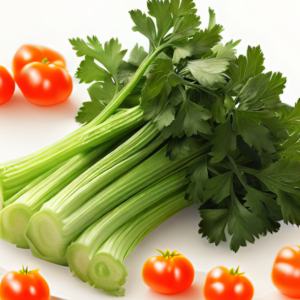Celery Golden Self Blanching
1,000 د.ك
Repacked in Kuwait
Celery Golden Self Blanching new. A well known and reliable Heirloom Golden Self Blanching Celery producing thick, crisp, juicy, deeply ribbed, tasty celery of excellent quality without the strings or bitter flavour of some other celery. Stems reach 18-23″s and are self blanching. Packet 250 seeds
Cultivation Advice For Celery – Golden Self Blanching
- Celery prefers well-draining soil rich in organic matter. Prepare the soil by adding compost or well-rotted manure before planting.
- Aim for a slightly acidic to neutral pH level (around 6.0 to 7.0).
- Start celery seeds indoors 8-10 weeks In July . Transplant seedlings outdoors once they are about 2-3 inches tall.
- Space the plants 12-18 inches apart in rows that are 24-30 inches apart.
- Germination Tips:Needs Light to germinate! Do Not cover with soil or other planting medium! 68-75
- Celery needs full sun but can tolerate partial shade, especially in hot climates where some afternoon shade might be beneficial.
- Keep the soil consistently moist but not waterlogged. Celery requires a consistent supply of water, especially during dry periods.
- Use a drip irrigation system or water at the base of the plant to prevent foliage from getting wet, which can lead to disease.
- Fertilize the soil before planting with a balanced fertilizer. Once the plants are established, side-dress with a balanced fertilizer every 3-4 weeks.
- Avoid excessive nitrogen, as it can lead to overly lush foliage at the expense of good root development.
- Celery often benefits from “blanching” to produce tender, pale stalks. This involves covering the stalks with soil or wrapping them with cardboard or newspaper to exclude sunlight. Golden Self Blanching celery is known for its self-blanching tendencies, meaning it naturally shades its stalks as it grows.
- You can also use collars made from cardboard or plastic to help with blanching.
- Apply a layer of organic mulch around the plants to help retain moisture, suppress weeds, and regulate soil temperature.
- Keep an eye out for common celery pests like aphids and caterpillars. Use natural predators or insecticidal soap if needed.
- Practice crop rotation to reduce the risk of soil-borne diseases.
- Harvest celery when the stalks are about 8-12 inches tall and have a crisp texture. Cut the outer stalks first, allowing the inner ones to continue growing.
- Store harvested celery in the refrigerator. If you have more than you can use fresh, consider blanching and freezing celery for later use.
- Celery can benefit from being planted near certain companion plants, such as tomatoes, cabbage, and onions. These plants can help deter pests that may otherwise affect celery.
- Celery prefers cooler temperatures. In hotter climates, consider providing some shade during the hottest parts of the day, or plant celery where it can benefit from natural shade.
- Regularly inspect your celery plants for signs of pests, diseases, or nutrient deficiencies. Early detection allows for prompt action to address issues before they become severe.
- Golden Self Blanching celery can grow tall, and providing support can prevent the plants from toppling over. Staking or tying the plants can help them stay upright, especially in windy conditions.
- Plan your planting schedule based on your local climate. Celery is a cool-season crop and can be grown in both spring and fall. In warmer climates, fall planting might be more suitable.
- Ensure good air circulation around the celery plants to reduce the risk of fungal diseases. Proper spacing, pruning of overcrowded foliage, and avoiding overhead watering can contribute to good air flow.
- Practice good garden hygiene to prevent the spread of diseases. Remove and dispose of any affected plant material, and avoid working in the garden when the foliage is wet.
- Harvest outer stalks as needed, but be mindful not to remove too many at once. Leaving some outer stalks helps the plant continue to grow and produce more stalks over time.
- Rotate your crops to different areas of your garden each year to minimize the risk of soil-borne diseases and pests that may affect celery.
- In areas with mild winters, celery can be overwintered with protection. Mulch around the plants to help maintain soil temperature and protect them from frost.
متوفر في المخزون






